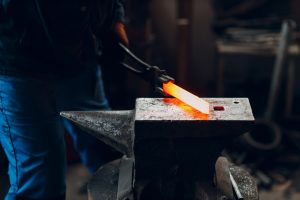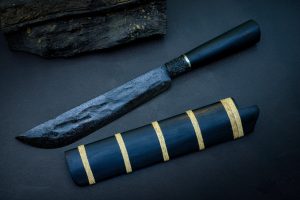Proper knife maintenance is essential to ensure safety, performance, and longevity. Whether for culinary, outdoor, or collectible knives, regular care preserves the edge, prevents damage, and enhances the overall experience of using a finely crafted blade. Understanding sharpening, cleaning, and storage practices is key to maximizing both functionality and lifespan.
Sharpening Basics
A sharp knife is safer and more effective than a dull one. Maintaining a keen edge reduces the effort needed to cut and prevents slipping accidents. Sharpening should be performed regularly, using appropriate tools such as whetstones, honing rods, or guided sharpening systems.
Whetstones and Honing
Whetstones come in various grits, from coarse to fine. Coarse stones reshape the edge, while finer grits refine and polish it. Beginners should start with a medium grit to maintain a balance between sharpening speed and precision. Honing rods, on the other hand, do not remove metal but realign the edge, keeping it straight between sharpenings.
Angle and Technique
Maintaining the correct angle is crucial for effective sharpening. Most knives require an edge angle between 15 and 20 degrees per side, but this varies depending on blade design and use. Consistent, controlled strokes along the full length of the blade ensure uniformity and prevent uneven wear.
Cleaning and Hygiene
Cleaning knives properly is critical for hygiene and preserving materials. Immediately after use, wash the blade with warm water and mild soap. Avoid harsh detergents or abrasive pads that can damage the steel or handle. Dry the knife thoroughly to prevent rust and corrosion, especially for high-carbon steel blades.
Handle Care
Handles require attention depending on the material. Wooden handles benefit from periodic oiling to prevent cracking and drying. Synthetic or composite handles are generally low-maintenance but should be inspected for loose fittings or damage regularly. Proper care of the handle ensures comfort, safety, and longevity.
Avoiding Dishwasher Damage
Most high-quality knives should not be placed in a dishwasher. Heat, moisture, and detergents can dull the edge, corrode the blade, and warp or damage the handle. Hand washing and gentle drying are always preferred to maintain performance and appearance.
Storing Knives Safely
Correct storage protects both the blade and the user. Knife blocks, magnetic strips, and sheathes are effective options to prevent accidental contact and edge damage. Avoid storing knives loosely in drawers where they can rub against other utensils, causing nicks and dulling.
Environmental Considerations
Store knives in a dry environment to prevent corrosion. High humidity can accelerate rusting, particularly for high-carbon steels. Regular inspection for signs of oxidation allows for early intervention and treatment.
Rust Prevention and Protective Measures
Rust can be minimized with regular maintenance. Applying a thin coat of food-safe mineral oil on high-carbon blades prevents oxidation. Stainless steel knives are less prone to rust but can benefit from occasional oiling for long-term protection.
Cleaning Rust Spots
Minor rust spots can be removed with a gentle abrasive pad or fine steel wool, followed by thorough cleaning and oiling. Preventing rust is easier than repairing it, making proactive maintenance a critical habit for all knife owners.
Regular Inspection and Repair
Routine inspection identifies issues before they become major problems. Check for loose handles, chips in the edge, or uneven wear. Addressing these issues promptly preserves safety and ensures that the knife continues to perform effectively.
Professional Maintenance
For specialized or high-end knives, periodic professional sharpening and maintenance can extend life and maintain peak performance. Professional services can restore damaged edges, polish surfaces, and ensure overall structural integrity.
Maximizing Knife Longevity
Consistent care extends the life of knives and maintains their aesthetic and functional value. Combining proper sharpening, careful cleaning, mindful storage, and regular inspection creates a habit of maintenance that benefits both hobbyists and professionals.
Developing a Routine
Establishing a regular maintenance routine makes it easier to preserve performance. Simple daily practices like wiping, drying, and honing, combined with periodic deep maintenance, create a long-lasting, reliable toolset.
Proper knife maintenance is a balance of technical knowledge, careful handling, and preventive care. By sharpening correctly, cleaning mindfully, and storing appropriately, users ensure that their knives remain safe, effective, and beautiful for years to come.




